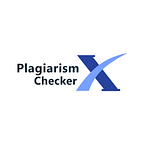Demystifying Plagiarism: Types, Causes, & Prevention with Plagiarism Checker X
Plagiarism, often regarded as the cardinal sin of academia, casts a shadow over the integrity of scholarly pursuits. So, let’s embark on a journey to demystify plagiarism, unraveling its various forms, exploring its underlying causes, and delving into effective preventive measures. Central to this is the indispensable role of plagiarism checking software like Plagiarism Checker X that is equipped with AI-enabled DeepSearch, Rapid Action Algorithm, and multilingual plagiarism detection in 50+ languages. Let’s dive into the heart of the matter and uncover the truth about plagiarism.
Understanding Plagiarism:
Plagiarism, in its simplest form, involves the unauthorized use or imitation of another’s work without proper attribution. It manifests in various guises, ranging from verbatim copying to subtle paraphrasing, each posing a threat to academic integrity.
Types of Plagiarism:
Direct Plagiarism:
Direct plagiarism occurs when a writer verbatim copies another person’s work without providing proper attribution. This could involve copying entire paragraphs, sentences, or even just a few words without quotation marks or acknowledgment of the original source. Direct plagiarism is the most blatant form of academic dishonesty and is often easy to detect through plagiarism checking software.
Self-Plagiarism:
Self-plagiarism, also known as text-recycling or duplicate publication, occurs when a writer submits their own previously published work as new without citing the original source. This can happen when authors repurpose content from their earlier publications, such as articles, essays, or research papers, without acknowledging their previous work. While it may not involve stealing someone else’s ideas, self-plagiarism still violates academic integrity by misleading readers about the novelty of the content.
Mosaic Plagiarism:
Mosaic plagiarism, sometimes referred to as patchwriting, involves piecing together information from multiple sources without proper citation or attribution. Writers may rearrange words, phrases, or sentences from various sources to create a new text that appears original but lacks original thought or analysis. Mosaic plagiarism often occurs when writers attempt to paraphrase information but inadvertently retain the original wording or structure too closely.
Accidental Plagiarism:
Accidental plagiarism occurs when a writer unintentionally fails to properly cite sources or inadvertently includes someone else’s ideas without acknowledgment. This could happen due to a lack of understanding of citation conventions, confusion about when to cite sources, or careless oversight during the writing process. While accidental plagiarism may not be intentional, it still constitutes a breach of academic integrity and can have serious consequences.
Global Plagiarism:
Global plagiarism involves submitting work that is entirely obtained from external sources as one’s own without any original contribution or attribution. This could include purchasing essays or assignments online, using essay mills or ghostwriters, or copying work from classmates or other sources without permission. Global plagiarism is a flagrant violation of academic honesty and undermines the principles of intellectual integrity and original scholarship.
Understanding the nuances of these types of plagiarism is essential for educators, students, and researchers to recognize and address instances of academic misconduct effectively. By promoting awareness of plagiarism and fostering a culture of academic integrity, institutions can uphold the standards of scholarly excellence and ethical conduct in the academic community.
Causes of Plagiarism:
Plagiarism often stems from a combination of factors, including time constraints, lack of understanding of citation conventions, and academic pressure. Additionally, the ease of access to digital information has blurred the lines between original work and unauthorized borrowing, exacerbating the prevalence of plagiarism in academic settings.
Preventive Measures:
Educate Students: Providing comprehensive education on citation practices, paraphrasing techniques, and the consequences of plagiarism empowers students to uphold academic integrity.
Promote Critical Thinking: Encouraging critical thinking skills fosters a deeper understanding of academic concepts and reduces the temptation to resort to plagiarism.
Utilize Plagiarism Checking Software: Plagiarism Checker X emerges as a formidable ally in the fight against academic misconduct. With its AI-enabled DeepSearch feature, Rapid Action Algorithm, and multilingual plagiarism detection, the software ensures the authenticity of student writing while improving grades and essays.
- DeepSearch Feature: Delve into the depths of digital repositories to identify even the most obscure instances of plagiarism.
- Rapid Action Algorithm: Swiftly analyze similarity scores and generate comprehensive reports, enabling prompt action to rectify plagiarism.
- Multilingual Plagiarism Detection: Overcome language barriers with the ability to detect plagiarism in 50+ languages, catering to diverse student populations.
Plagiarism, though pervasive, is not insurmountable. By understanding its various forms, addressing underlying causes, and embracing preventive measures, we can foster a culture of academic integrity. Plagiarism Checker X stands as a testament to our commitment to ensuring authenticity in student writing, empowering individuals to navigate the complexities of academia with honesty and integrity. Together, let us demystify plagiarism and uphold the principles of scholarly pursuit.
Stay in Touch
There are many great features to use in Plagiarism Checker X and we continually work to improve them and add new ones, so stay connected for all updates.
